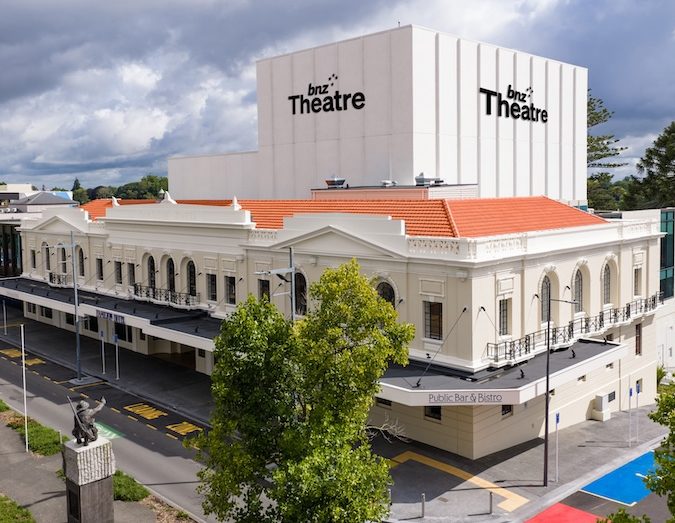
Over the past few months there has been a plethora of bubble-gum pink no matter where you look. This is all thanks to the combination of the most highly anticipated movie of the year, ‘Barbie’, and its business strategy.
According to Google Trends in the past five years, 2023 marks the year that the keyword ‘Barbie’ has skyrocketed in the number of searches.
The hashtag #BarbieTheMovie has over 1.4 billion TikToks, proving that the hype for this film is like no other.
But it is not because of the star-studded cast or the nostalgic factor linked to the film that is causing this ‘Barbie-mania’.
This year alone, Barbie has collaborated with over 30 brands across the world, including clothing store Zara, roller skates company Impala, candle brand Glasshouse and dating app Bumble.
An Idealog favourite collaboration is the brands partnership with Airbnb where it opened the first real-life Barbie Dreamhouse in Malibu.
Observing these numerous collaborations, it’s clear that Barbie, or rather its marketing team, is actively striving to generate excitement around the brand and leverage this hype in order to achieve success at the box office.
Diana Marshall, Co-Founder and Digital Marketer of Tailored Studio says that the ‘Barbie’ strategy is focused on developing brand awareness as the brand has created an existing, loyal and cult following, so the collaborations are focusing on re-engaging existing audiences.
“Collaborating with other brands [also] gives Barbie access to a new audience that might never have the opportunity to discover them otherwise, and when partnerships are executed well, they’re clearly creating topical or interesting moments for PR,” she says.
Barbie is doing this by tapping into its history, making the most of the resurgence of trends from the 90s and early 2000s and collaborating with current popular brands to bring them into the modern day.

Marshall also adds that Barbie, a brand which turned 64 this year ,is partnering with these “cool” brands to appeal to the younger, Gen Z audiences, who are less likely to be playing with dolls now and are more digital savvy.
“A blanket approach like this has certainly had an incredible impact on the industry as a whole; look at how hot pink (‘Barbie pink’) and #barbiecore are trending in fashion this season – it goes so much further than collaborations,” says Marshall.
Read more: Ethique’s CEO gets very own Barbie doll as role model of the year
But she asks the question on whether the collaborations have reached a point of “over-saturation”.
Regardless of where you turn, it’s impossible to escape the presence of all things Barbie at the moment. However, there’s no denying the effectiveness of this strategy thus far, as the upcoming movie is anticipated to rake in a staggering $70 to $80 million during its opening week alone. This impressive figure amounts to roughly half of the film’s $145 million budget, and it’s projected to keep climbing as the release date draws nearer.
So, what can every business learn from the book of Barbie’s marketing strategy?

When it comes to brand collaborations in general, Marshall says they should be “considered and clever” since often, one brand is set to benefit more than the other.
“Looking for the right alignment is key – your values have to align. While a collaboration can be unexpected (which makes it exciting), it still needs to make sense from a brand perspective for both parties,” she adds.
Collaborations should be practiced with a side of caution and “practice quality over quantity”.
“When the alignment is right, leverage as much as possible through all marketing channels, and request your partner brand do the same,” says Marshall.
Marshall looks at other brand collaborations that have sprouted up and proved the effectiveness that comes with partnerships, and it seems to have worked the best in fashion.
She says some of the best collaborations to date include Gucci x Adidas, where the luxury powerhouse, Gucci was able to tap into the sportswear category, boosting their credibility to sell with that market and “stay relevant as the market shifts”.
Adidas was also able to benefit as it used this opportunity to elevate its brand by aligning with a luxury designer house.
High street but affordable fashion brands Uniqlo and H&M have recently collaborated with designer houses such as Mugler and Marni to give customers across the world an elevated experience at an accessible price point while also giving these fashion houses exposure.
“Crocs are another great example of a brand that has stayed relevant by releasing regular collaborations that are either high-fashion or interestingly obscure – everything from Taco Bell, Jimmy Kimmel, Cars the movie, PLEASURES, 7-Eleven and SZA,” she says.
She adds that she recently loved the Le Creuset collaborations with brands such as Mickey Mouse and Harry Potter which bring an “unexpected, whimsical” collectors editions that drive repeat purchases.
Looking at all these collaborations, and the never-ending Barbie ones, this strategy is proven to be a success.
Even the Idealog team is definitely getting into the cinemas when it comes out, thanks to all these Barbie collaborations.




